Friday, July 6, 2012
Thing #23
I have learned many things during this class. On a personal level, I found Google Reader feeds interesting. I set up a reader and subscribed to several crafting blogs, which I then pin to Pinterest. It is much easier than checking a multitude of websites. I also have found many educational blogs as well. This is a good way to keep up with all of the new Web 2.0 information out there. By following other educators on Twitter, I can also keep up with the latest developments as well. During the course, I have discovered many ways to enhance the learning of my students. I learned new ways to use YouTube in the classroom (it is so much more than just entertainment). I also enjoyed learning about slideshows, online generators, Delicious and LibraryThing and discovered ways they can be implemented into the classroom. There is always something new to learn!
Thing #22
Classroom 2.0 is another great resource for educators. Just by exploring the site, it seems that almost any topic is discussed. I explored how to use applications and technology in the classroom (such as VoiceThread, ipods, Promethean boards, tablets, Twitter, and Wikis). Discussing and getting feedback and ideas from fellow educators is a good learning tool. I also found other posts about book recommendations and the best sites for embedding videos useful as well. You can search for local educators (I typed in TX) or connect with others all over the world. The amount of information can be overwhelming, but just focusing on what interests me or relates to my job is a good place to start.
Wednesday, June 27, 2012
Thing #7B
Going through my reader, I found an interesting idea. I love how she created an end of the year math journal entry to review all that was learned during the school year. Definitely trying this!
Thing #21
I have used Twitter socially, but not for professional/educational purposes. I think it is a great way to gain even more knowledge and ideas from other educators. Many websites and blogs have the "follow me" twitter icon, which I usually dismiss. Now, I will pay more attention and will follow them. I admit that I do not tweet very much, but will make the effort to share more of what I learn. I do follow TEA on Twitter - I think it is a must for educators. Follow me! @CurtsMeg
Thing #20
Google Docs can be used in a variety of ways.
1. Teachers in a grade level can collaboratively use a document for planning upcoming lessons by the week or the 6 weeks. Teachers can add their ideas or links to videos or websites on the topic. At planning meetings, the document can be discussed and decide upon which applications would best enhance the lessons.
2. Presentations can be used in teaching lessons (in place of PowerPoint or something of the like). The benefit here is that if the presentation is shared with others (let's say other grade level members) then they will have the same access to it in their own classrooms. There wouldn't be a need to email files, since it would be located in each teacher's Google Docs.
3. Spreadsheets are easy enough to use and a common application. However, using a spreadsheet through Google Docs allows for it to be shared and edited (if so chosen). If faculty members are keeping track of goals or other items (such as contest results) then they would have easy access to that information as well. That could be shared with the entire school instead of just a few faculty members.
Thing #19
Voicethread is an application that allows for a large or whole group collaboration. Students can work with partners or small groups to create a part of the presentation or project, then it can be compiled into a whole group or class Voicethread presentation. Below is an example of this. Students took pages from the book The Mysteries of Harris Burdick and created stories to go along with the pictures. They then compiled their stories into one presentation.
Voicethread can be used with projects in the classroom or library. Students take more ownership of their work and can learn from others. Voicethread can be used personally, by sharing pictures and photos with friends and family and being able to hear them comment and discuss.
Voicethread can be used with projects in the classroom or library. Students take more ownership of their work and can learn from others. Voicethread can be used personally, by sharing pictures and photos with friends and family and being able to hear them comment and discuss.
Thing #18
There is so much to choose from on both YouTube and Teacher Tube. I searched for videos related to the library that could be shown at the beginning of the year to get students excited about coming to the library and show them what the library has to offer. I just sampled a few of the videos that were out there, but I found a few that could stress this point.
There is probably a video on almost any topic out there. These could easily be incorporated into lessons to make the learning more meaningful. On Teacher Tube I noticed a lot of songs about specific topics. On YouTube there are many parodies (that teach skills or concepts) to popular music that kids could relate to.
There is probably a video on almost any topic out there. These could easily be incorporated into lessons to make the learning more meaningful. On Teacher Tube I noticed a lot of songs about specific topics. On YouTube there are many parodies (that teach skills or concepts) to popular music that kids could relate to.
Thing #17
Podcasts are a great resource to implement into classroom instruction. There are so many podcasts on such a variety of topics. Using Learn Out Loud podcast directory, I previewed The Founding Documents and The US Presidents podcasts. Both of these podcasts (or any other similar podcasts) can be used to enhance social studies lessons. On iTunes, I found even more podcasts. For example, Promethean Planet had a podcast that gave tutorials about the Active Inspire software for the promethean board. Podcasts would be great for helping students learn and providing teachers with strategies and tutorials to make lessons better.
Thing #16
LibraryThing is yet another great organization tool. I like to keep track of what I have and this site will allow for just that. As a classroom teacher, I always wanted to keep a list of the books that I had (for classroom use) so that I could refer to them while lesson planning, etc. LibraryThing is the perfect resource for that. In addition to keeping track of books, I can find recommendations for future books as well as author information and a discussion forum. In the classroom, the site can be used to find books about a certain topic or idea, or give suggestions for read alouds.
Thing #15
Delicious in another great organizational tool. It is similar to Pinterest, in that you can share and search ideas with others. However, it is different because it can be defined specifically with tags. I set up a stack of Library Displays. while searching the internet for ideas, the results were very broad, ranging from home libraries, office libraries, college libraries, etc. Being a new elementary librarian and wanting ideas specifically for an elementary school setting, I can use Delicious to tag those sites that pertain to what I am looking for. Later, I can revisit those sites to view ideas about library decorating and displays. Professionally, Delicious can be used with teachers to compile information that would further enhance what they are working on in class. It would be a great collaboration tool for teachers and other school personnel. View my Delicious links here.
Friday, June 22, 2012
Thing #7a
One of the feeds in my reader is a blog about bulletin board ideas. I am always looking for fresh ideas. This one caught my attention - it is an American flag created by recycling items.
Thing #14
Using Wordle students can create "art" to review vocabulary words, practice spelling words, create a summary (of sorts) of text or to describe themselves. I created a Wordle using vocabulary from a plant unit. This application is very easy to use and user friendly. You do not have to create an account or sign in to use it. You can choose to save your work to a public gallery, and can save it as anonymous if you choose to.

I looked at TimeGlider which is a site that allows you to create timelines. This would be a great resource for history or social studies classes. However, you did have to create an account to use this, and the free version only allowed for 5 timelines. It seemed easy enough to create the timeline, but should have unlimited use if it were to be used in a classroom or instructional setting.

I looked at TimeGlider which is a site that allows you to create timelines. This would be a great resource for history or social studies classes. However, you did have to create an account to use this, and the free version only allowed for 5 timelines. It seemed easy enough to create the timeline, but should have unlimited use if it were to be used in a classroom or instructional setting.
Thing #13
*Using Mosiac Maker, I used several of my own images (of my dogs) from Flickr to create a picture collage.

1. IMG_9141, 2. IMG_9118, 3. IMG_7182, 4. IMG_6623
*Using a Comic Strip Generator, I created the following:

*I used a Logo Generator to create my name.
Using Famous Star I am famous!

*Other things that can be used in the classroom that I discovered using The Generator Blog:
Create a Crossword Puzzle to review vocabulary or spelling words
Make Your Own Cereal Box to have students create a autobiography or biography
Use an Imagination Prompt Generator for writing
There is so many resources out there! Always experiment with them first, since there are some that would be inappropriate for the classroom. There are many ways to use these generators in all subject areas - be creative!

1. IMG_9141, 2. IMG_9118, 3. IMG_7182, 4. IMG_6623
*Using a Comic Strip Generator, I created the following:

*I used a Logo Generator to create my name.

Using Famous Star I am famous!

*Other things that can be used in the classroom that I discovered using The Generator Blog:
Create a Crossword Puzzle to review vocabulary or spelling words
Make Your Own Cereal Box to have students create a autobiography or biography
Use an Imagination Prompt Generator for writing
There is so many resources out there! Always experiment with them first, since there are some that would be inappropriate for the classroom. There are many ways to use these generators in all subject areas - be creative!
Thing #12
Photo Credits
1. Lone Star Paint Job by Ray Bodden
2. Texas Capitol by Vanessa Nunes
3. The Alamo by Stuart Seeger
4. University of Texas by Jeff Gunn
5. BOMA Dallas Trip by Kevin Tostado
6. Texas Bluebonnets by Jeffery Pang
I used Animoto to create a slide show about different landmarks in Texas. Another great teaching tool!
Friday, June 15, 2012
Thing #11 Stretch
Spell with Flickr could be used with weekly spelling words or vocabulary for a certain concept.
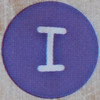
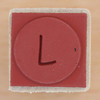
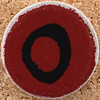
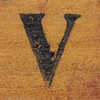
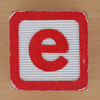
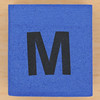
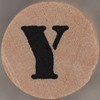
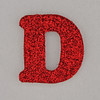

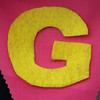
Flickr Color Pickr can be used in many different ways - poetry, creative writing, finding similarities and differences, inferencing, etc.










Flickr Color Pickr can be used in many different ways - poetry, creative writing, finding similarities and differences, inferencing, etc.
Thing #11
I think that Flickr is a great tool to enhance learning and student projects. There are unlimited uses for this tool in the classroom. When teaching a unit on habitats or ecosystems, students could each be assigned a different category to find pictures that would show their topic. The pictures then could be combined to create a class presentation. I chose the topic of Texas to search for images on Flickr. These images could be used in a 4th grade research project to illustrate or help visualize different aspects of Texas.
Photo: Lone Star Paint Job by Ray Bodden
Photo: Lone Star Paint Job by Ray Bodden
Thing #10
Creative Commons allows educators to bring more creativity into their lessons & relate the learning to their students. By using other materials (videos, pictures, etc.) that gets the students' attention, learners become more engaged and active in the learning. I think more teachers should be aware of Creative Commons and know that they are not limited as to what they can and can't use in the classroom due to copyright issues. Teaching students about CC will also allow for more creativity in their projects. Students and teachers both should take advantage of what is "out there". Creative Commons allows for creativity to enhance your work.
Stretch
I use CC Search to type in different topics that I would use in my curriculum. Using Flickr, Google Images and YouTube I can enhance any lesson and engage more students by catering to their different learning styles.
Stretch
I use CC Search to type in different topics that I would use in my curriculum. Using Flickr, Google Images and YouTube I can enhance any lesson and engage more students by catering to their different learning styles.
Thursday, June 14, 2012
Thing #6
I love the reader! It makes keeping up with information so much easier. It is a great way to keep up with up to date technology & teaching strategies (when subscribed to those blogs). I also subscribed to several bloggers feeds that I have found on Pinterest. Instead of checking their blogs, it all comes to me.
As part of the stretch activity, I created a custom news feed on the NBA Finals. Needless to say that there were numerous items that appeared each day. However, when the finals are over those items will subside.
As part of the stretch activity, I created a custom news feed on the NBA Finals. Needless to say that there were numerous items that appeared each day. However, when the finals are over those items will subside.
Tuesday, June 12, 2012
Thing #8 - Stretch
Using Wikipedia, I searched for Johnny Depp. Although the biography seemed to contain the basic information, there was much discussion as to what was or wasn't accurate. For example, is he or is he not related to the Queen of England and the order of his first and middle name. If you want a general idea on a topic, then Wikipedia is fine. However, those requiring detailed information or accurate research should look elsewhere.
Thing #8
What I take from Vicki Davis' blog about wikis is motivation to use them with instruction based on her students' reactions. They were not only excited about using them, but were taking ownership and responsibility of their own learning. I will be using them in the future.
I explored many educational wikis but was more drawn to the ones that I could apply towards my content area & grade level. The Thousands Project was a wiki that promotes collaboration and interaction with others by asking open ended & inviting questions. The wiki Schools in the Past appears to be student centered, where they combined their thoughts and information they gathered to create a learning tool for both students and parents. Both of these wikis are student centered and would be perfect to use with instruction.
Another wiki I explored was Springfield Township Virtual Library. This wiki provided an abundant amount of resources, almost to the point of being overwhelming. While the content is good, the appearance is a bit confusing and should be organized so that it is visually pleasing.
A wiki could be used when collaborating with other teachers, such as in grade level planning. Teachers could collect websites or ideas and others could add to them throughout the week. The wiki then could be used to plan lessons and extensions, as well as used as a tool for cross curricular planning. The possibilities would be endless. It could also be a tool for communication with parents, where teachers could post newsletters or sign up sheets.
I explored many educational wikis but was more drawn to the ones that I could apply towards my content area & grade level. The Thousands Project was a wiki that promotes collaboration and interaction with others by asking open ended & inviting questions. The wiki Schools in the Past appears to be student centered, where they combined their thoughts and information they gathered to create a learning tool for both students and parents. Both of these wikis are student centered and would be perfect to use with instruction.
Another wiki I explored was Springfield Township Virtual Library. This wiki provided an abundant amount of resources, almost to the point of being overwhelming. While the content is good, the appearance is a bit confusing and should be organized so that it is visually pleasing.
A wiki could be used when collaborating with other teachers, such as in grade level planning. Teachers could collect websites or ideas and others could add to them throughout the week. The wiki then could be used to plan lessons and extensions, as well as used as a tool for cross curricular planning. The possibilities would be endless. It could also be a tool for communication with parents, where teachers could post newsletters or sign up sheets.
Thing #7
It is important to comment on blogs to keep the discussion going. What is the point to a blog if it is not interactive with the author & readers? I learned that comments should be meaningful and constructive. Rather than comment with "good idea", add more to the conversation. In response to a teacher's blog about a place value activity, I shared a different way in which the activity could be done. I am curious to see if there are any other variations on the activity that I could use to modify it in a way to best fit my students' needs.
When using blogs with students, it is important to teach them etiquette and what is and is not acceptable. How they respond to those who comment on their posts should also be addressed.
When writing posts, one should invite comments through asking questions. Questions should be open ended, not just a yes or no question. It is also important that the writer interact with the readers through the comments that are left. It would be a very one sided conversation without interaction from the author and the readers.
When using blogs with students, it is important to teach them etiquette and what is and is not acceptable. How they respond to those who comment on their posts should also be addressed.
When writing posts, one should invite comments through asking questions. Questions should be open ended, not just a yes or no question. It is also important that the writer interact with the readers through the comments that are left. It would be a very one sided conversation without interaction from the author and the readers.
Thing #5
Several things interested me in my reader. There were many technology links that can be integrated into classroom instruction. Tech&Learning provided many posts that would be beneficial to a classroom teacher, such as What is a Blog?, which gives information and ideas to those new to blogging. Some posts also lead to new ideas and applications, such as Inspiration Maps. Using the reader is a great tool to keep up to date on new information and sort out what doesn't interest you.
Thing #4
In reading these blogs, I noticed that opinions and ideas can be expressed openly and freely. Rather than expressing a one sided opinion (as in other types of reading and writing), blogs allow for instant discussion and an open dialogue with the author/readers. Discussion allows for other view points and ideas to also be expressed or to be thought of in a new way. Blogging can facilitate learning by promoting discussion & interaction between teachers, students and parents. Students can share ideas with one another and get feedback or prompts from their teachers. In the case of Patrick's Update: 5th Grade, blogging can provide encouragement of reluctant or struggling learners. As a teacher, blogging can also be added to my toolbox by exposing me to new ideas and strategies, such as in 14 Steps to Meaningful Student Blogging.
Monday, June 11, 2012
Thing #2
My first thoughts about Web 2.0 and its role in teaching and learning is how it would work effectively. The collaboration between the faculty and students is what makes it work. There is no cookie cutter recipe to the technological tools and digital learning, rather there is a constant change based upon students' needs and learning styles. The new tools can engage today's digital learners by catering to their individual learning styles. Engaged students are students who are learning. These tools could support my learning of my students and their learning styles as well as my own.
Thing #1
My most challenging habit would be #3 - view problems as a challenge. Not understanding something the first time or having something not work could lead to frustration. Rather than viewing them as problems, if I think of them as challenges the frustration would go away. I am always ready for a challenge.
The easiest challenge would be #1 - begin with the end in mind. I do well when I understand and see my goals. Knowing the final outcome can help me accomplish the small goals along the way.
I think the most important habit for me would be #4 - have confidence in yourself as a competent, effective learner. I am always telling my students "you can do it, you know this". I need to practice what I preach.
Subscribe to:
Posts (Atom)
